|
3/19/2020 3 Comments Time to awaken: how to prevent pandemics, improve your health and live in harmony with the animalsIn these challenging times, during the coronavirus pandemic, I pray for the healing and safety for all living beings. While the world is trying to survive this global health world crisis, although some do not want to discuss this topic, there is no better time than now to learn how we can prevent further pandemics. This can be done, in part, with own conscious and compassionate food choices.
While we are feeling the direct effect, both individually and globally, from this crisis, this is an opportunity for people to make a needed change. And we need this, not later, but now. Some people say that eating animals is a personal choice, and prefer that others do not speak about the harmful effects of animal agriculture, the wildlife trade, fishing industry, animal entertainment (circuses) and the leather and fur for fashion industry). However, what we eat effects everyone...not only the animals lives taken, but human lives as well. As the world suffers from the coronavirus pandemic, what have we learned, that can prevent this in the future? Many are taking drastic measures to socially distance and create hygiene habits to prevent the spreading of the virus, while we are treating people in hospitals and mourning the losses of already thousands of deaths from this, with sadly, more to come. Our food choices either supports compassion or the animal cruelty that cause these viruses. I hope that more people shift to a vegan diet that is in alignment with harmony and peace, for the earth, humans and all animals. There are many other benefits too, when shifting from animal consumption to vegan eating. The human health, earth sustainability and the animals will all benefit. This challenging time can be a positive opportunity for humans to make healthy, conscious and compassionate choices, that will aid in the sustainability of our precious planet, for humanity as a whole, and most definitely for the animals. The worst epidemics in history originated from the factory farms, animal exploitation and wet markets, from people killing and eating animals. The coronavirus itself can go from snakes and bats to humans, as was proven via research in January 2020. This was published in the Journal of Medical Virology, titled "Cross‐species transmission of the newly identified coronavirus 2019‐nCoV". The research states: "The current outbreak of viral pneumonia in the city of Wuhan, China, was caused by a novel coronavirus designated 2019‐nCoV by the World Health Organization, as determined by sequencing the viral RNA genome. Many initial patients were exposed to wildlife animals at the Huanan seafood wholesale market, where poultry, snake, bats, and other farm animals were also sold. To investigate possible virus reservoir, we have carried out comprehensive sequence analysis and comparison in conjunction with relative synonymous codon usage (RSCU) bias among different animal species based on the 2019‐nCoV sequence. Results obtained from our analyses suggest that the 2019‐nCoV may appear to be a recombinant virus between the bat coronavirus and an origin‐unknown coronavirus...Additionally, our findings suggest that 2019‐nCoV has most similar genetic information with bat coronavirus and most similar codon usage bias with snake....In summary, results derived from our evolutionary analysis suggest that 2019‐nCoV has most similar genetic information with bat coronavirus and has most similar codon usage bias with snake. Additionally, a homologous recombination may occurred within the viral receptor‐binding spike glycoprotein, which may determine cross‐species transmission." In the article "Bats are not to blame for coronavirus. Humans are" on CNN, it says "The underlying causes of zoonotic spillover from bats or from other wild species have almost always -- always -- been shown to be human behavior," said Cunningham. "Human activities are causing this." When a bat is stressed -- by being hunted, or having its habitat damaged by deforestation -- its immune system is challenged and finds it harder to cope with pathogens it otherwise took in its stride. "We believe that the impact of stress on bats would be very much as it would be on people," said Cunningham. "It would allow infections to increase and to be excreted -- to be shed. You can think of it like if people are stressed and have the cold sore virus, they will get a cold sore. That is the virus being 'expressed.' This can happen in bats too." Pathogens that have evolved in bats can withstand a high body temperature, so a human fever will not work as a defense mechanism. In the likely epicenter of the virus -- the so-called wet-markets of Wuhan, China -- where wild animals are held captive together and sold as delicacies or pets, a terrifying mix of viruses and species can occur. "If they are being shipped or held in markets, in close proximity to other animals or humans," said Cunningham, "then there is a chance those viruses are being shed in large numbers." He said the other animals in a market like that are also more vulnerable to infection as they too are stressed. "We are increasing transport of animals -- for medicine, for pets, for food -- at a scale that we have never done before," said Kate Jones, Chair of Ecology and Biodiversity at University College London. "We are also destroying their habitats into landscapes that are more human-dominated. Animals are mixing in weird ways that have never happened before. So in a wet market, you are going to have a load of animals in cages on top of each other." As Sharon Gannon, author of Yoga and Veganism: Diet for Enlightenment says, "Coronavirus is a zoonotic disease—meaning the virus jumped from animals to humans. The stress of confinement suffered by trapped and enslaved animals is known to bring about pathologies. We know this from past pandemics. Mutations allow diseases to jump species: trichinosis, tuberculosis, and swine flu were originally diseases found in pigs, influenza came from avian (bird) flu, horsepox mutated into smallpox, bovine rinderpest became measles, Creutzfeldt-Jakobs disease is the human equivalent of mad cow disease. The 2003 SARs pandemic like today’s Covid-19 is thought to have been transmitted by bats. Many scientists think that AIDs spread to humans through bush meat. The 2014 Ebola outbreak originating in Africa was believed to be caused by eating bushmeat. Bushmeat refers to many species of wild animals including bats, antelopes, monkeys, snakes, and rats." Most people are not eating bats and snakes, so may not connect this issue to eating other animals, as it relates to pandemics. However, other viruses have started in factory farms, where animals and baby animals, (including pigs, chickens, and cows) are bred and kept in captivity. The fish farms also breed disease. Both meat and dairy foods can create this problem. We can make choices that either prevent or support this horrifically cruel industry, which can also be the breeding grounds for pandemics. Animals, whom deserve to be free in their natural habitat and free of suffering, are held in cages, in brutal conditions or crammed together in CAFO's (Concentrated Animal Feeding Operations), that can spread disease and kill not only the animals themselves, but eventually the humans too. Many people think that when then eat pigs or cows, eggs, cheese and milk, they are eating once alive animals who were once free and roaming in beautiful green pastures, living happy lives with a pain free slaughter. This could not be further from the truth. In fact, 99% of animals eaten in the USA come from factory farms, per PETA and Factory Farm Awareness Coalition. Have you ever been inside of or seen footage of a factory farm or slaughter house? Would you want to? The meat and dairy companies purposely have duped society by their advertising, to increase meat and dairy sales. People's parents and grandparents passed down the belief that the animals you eat were once happy and free, and that your health will not have ill effect from eating them, but in fact will benefit. Both of these are complete untruths. Knowledge is power, so it is time for humans to awaken and make compassionate and educated choices, for the benefit of all. In terms of health, the animal agriculture industry also have falsely stated via advertising, how you need animal protein and cow's milk for human health, when that also is the opposite of the truth. (You can read "How Not To Die" and How Not To Diet" books by Dr. Michael Greger for more details on this.) In fact the animal products can cause heart diseases, some cancers and other health issues. I know this firsthand, as our family was raised vegetarian. I never ate even one bite of an animal in my life (chicken, cows, pigs or fish.) I am now vegan, along with my 80 yr old father (and his vegan dog Davinchi.) I not only experience the health benefits of this diet personally, but as a yoga teacher for 25 years, educating people on the yogic diet (vegetarian or vegan), I also see my students health improve when then shift their eating habits. I also see people reduce medication and symptoms of diabetes and heart disease, as well as from joint pain and other benefits of eating a plant-based, whole foods vegan diet. I see this weekly, because I am a Stress Management Specialist for the N. CA Ornish Heart Disease Reversal Program, covered by Medicare and research based. I see firsthand that you can not only prevent heart disease from a vegan or vegetarian diet (in conjunction with yoga or stress management, exercise and social support), but that you can even reverse it. Dr. Ornish did the same study on lifestyle medicine with prostate disease and found similar results. I am currently teaching for his Alzheimer's research study as well, on the same lifestyle and vegan diet. I love watching the participants feel more energy, lost weight and feel better from this diet and lifestyle. I will conclude with some wisdom from vegan yoga masters. This morning (March 19, 2020), a 80 year old vegan🌱yoga master Dharma Mittra said at the end of his live online class: “This virus is because people are killing and eating animals. So please stop.” He also said “have compassion for all living beings, even the virus." That last part takes compassion to the next level! Sharon Gannon, author of Yoga and Veganism: the diet of enlightenment: “In the UK some supermarkets have closed their fish and meat counters to ”Stock What Our Customers Really Need.” If we are closing schools, restaurants and gyms to reduce infection - why not get smart and close factory farms, meat markets and slaughterhouses - as they are dangerous breeding ground for contagious diseases caused by viruses? The coronavirus is one such virus. We don’t have to wait for “them” to close the farms, meat markets and slaughterhouses - we can close them by not buying such cruel commodities and not being silent - speaking up for the animals and the Earth. Let us herald in a new way of being the age of kindness: Veganism.” Her article called Crown of Creation says "Isn’t it way beyond the time that we stop eating animals? Stop trapping them? Stop putting them in cages? Stop confining them in dark warehouses, feedlots and barns? Stop breeding them as commodities? Stop slaughtering them by the billions every year world-wide? When someone says that if other people choose to eat animals, that is their choice –their business. Well with this recent coronavirus outbreak-the Chinese animal markets have become our business too. Anywhere where animals are being used and abused should become our business. Animal enslavement, exploitation, and abuse are happening everywhere in every country, on land and sea. It has formed the basis of our global economy since the first stock markets." So let us take action today, one meal at a time, by choosing consciousness and compassion. by Stacie Dooreck, author of SunLight Chair Yoga and Yoga for Everyone! books and Certified Yoga Instructor (since 1995) for Bay Area companies, Chair Yoga teacher trainings and online courses. For further reading and information on this topic:
3 Comments
3/10/2020 0 Comments Yet another reason to go vegan: stop the spread of worldwide viruses and diseaseAs a lifelong vegetarian, now vegan, who never tried or ate fish, chicken or animals, I can’t understand how humans eat animal flesh, once living, feeling and breathing beings, that feel emotions, communicate and have families, just like us.
As the Coronavirus spreads throughout the world, although not 100% confirmed yet as to why, it is possible and likely this virus came from ‘wet markets’ in China, markets that are exploiting, violently harming animals of all kinds (after holding in captivity), and then slaughtering innocent animals. All animals want to avoid suffering and live, just like humans. As Dharma Mittra, 80 year old vegan yoga master says, to evolve we must “expand our compassion beyond our pets.” So here is yet another reason to stop eating animals. Now, not only will it benefit your health, the earth and save animals, as well as the violence that causes karmic repercussions, when human beings harm and kill animals, it also can prevent disease from spreading in the form of viruses. (Karmic repercussions can be in this lifetime, as in causing diseases in humans, from eating animals as well as earth changes from harming the earth and the ecosystems in oceans and on land.) Ingesting and eating animal flesh increases and can even cause heart disease, certain cancers and other diseases. PER I teach Stress Management (yoga and meditation) for the Ornish Heart Disease Reversal Program in N. CA for two years, which is a research based and proven program that shows how going vegan or vegetarian (with exercise, yoga and support), can reverse heart disease. We know for sure that a plant-based vegan diet can prevent many diseases. But this Coronavirus has given us now more reasons to ponder why going vegan is beneficial for everyone (the animals and the earth included). Instead of recreating the words to describe this in more detail and why, I will share some recent information, shared this month from other sources on the topic, for a more detailed explanation (with links to read more). You can decide for yourself: do you want to improve your health, help the animals reduce suffering, promote compassion and not violence, support earth’s sustainability and also decrease the spread of worldwide viruses? Sounds like a good idea to me! From Business Insider “Both the new coronavirus and SARS outbreaks likely started in Chinese wet markets. Photos show what the markets look like The novel coronavirus and the SARS outbreak of 2003 have two things in common: Both are from the coronavirus family, and both most likely started in wet markets. At such markets, outdoor stalls are squeezed together to form narrow lanes, where locals and visitors shop for cuts of meat and ripe produce. A stall selling caged chickens may abut a butcher counter, where meat is chopped as nearby dogs watch hungrily. Some vendors hock hares, while seafood stalls display glistening fish and shrimp. Wet markets put people and live and dead animals — dogs, chickens, pigs, snakes, civets, and more — in constant close contact. That makes it easy for zoonotic diseases to jump from animals to humans. “Poorly regulated, live-animal markets mixed with illegal wildlife trade offer a unique opportunity for viruses to spill over from wildlife hosts into the human population,” the Wildlife Conservation Society said in a statement. In the case of SARS and the new coronavirus disease, called COVID-19, bats were the original hosts. The bats then infected other animals, which transmitted the disease to humans. The coronavirus has now killed at least 2,700 people and infected more than 80,000 others. (For the latest totals, see Business Insider’s live updates here.)” Click to read the full article. From “Eating Animals Will Be The Death Of Us”: “‘Wet markets’ There are many discussions taking place about how we can prevent and stop the spread of disease, followed by calls from experts for better hygiene, tighter controls at airports, banning the unregulated movement of wild animals and limiting human-animal contact. But the obvious solution, the simplest, most cost-effective solution which no-one has yet to admit, is to stop eating animals. This coronavirus originated from one of Wuhan’s many live-animal markets. Over 100 different animals are sold here, including wolf pups, civet cats, poultry and snakes. These animals are kept in cramped, dirty conditions, with direct contact with humans. These markets are referred to as ‘wet markets’ – so called because animals are often slaughtered directly in front of customers. Aside from the obvious issues with having a high population density made up of humans and animals – a hotbed for disease outbreak – these markets are repulsive places. They are filled with caged, frightened animals, many of which have been captured illegally in the wild. Perfect storm The animals are skinned and slaughtered, sending a cocktail of microorganisms into the air. The dreadful, cramped conditions and mix of wild and domestic creatures, alongside the throngs of people choosing their victims, is a pandemic in the making. It was an inevitable consequence of poor hygiene, cross-contamination, and low animal welfare. The saddest part of this story is that scientists saw this coming. Researchers have been stressing the link between human and wildlife health for decades and, in particular, the potential threat of coronaviruses was first identified following the 2003 SARS outbreak (also caused by a virus jumping from animals to humans). Scientists studying bats in the Yunnan Caves realised that the coronavirus was making the jump from bats to humans. It is now thought that the virus spread from bats to snakes, which are then captured and taken to live animals markets and eaten as a local delicacy. Scientists saw this coming; the Wuhan animal markets merely presented the perfect storm for disease outbreak. As much as we can improve hygiene and as much as we can control the movement of animals, all it takes is another perfect storm to spark the next pandemic.“Click to read the full article. From Gene Bauer of Farm Sanctuary (animal rescue farm) “SARS, MERS, and COVID-19 are contagious diseases that jump from animals to humans, and more needs to be done to curtail these, including banning live animal markets. But, other potentially fatal zoonoses also warrant attention. The Centers for Disease Control and Prevention (CDC) warns: “…3 out of every 4 new or emerging infectious diseases in people come from animals.” These include viruses, bacteria, fungi and parasites, and they infect millions of U.S. citizens every year. In the U.S., almost ten billion animals are exploited and slaughtered every year. Most live short miserable lives in overcrowded factory farms, which are a breeding ground for disease, including emerging pathogens and virulent strains of antibiotic-resistant bacteria. In addition to foodborne illness and environmental pollution, animal agriculture can also incite global pandemics like H1N1, which was initially called “swine flu” because it was linked to a similar disease in pigs, but its connection to animal agriculture has since been largely obscured.” Read the full article below. “Transitioning agriculture and government policies will take time, but each of us can make daily choices to help the planet and ourselves. Eating nutritious, plant-based foods can help fortify our immune systems, thereby enhancing our ability to withstand various threats, including from contagious viruses like COVID-19. Our disrespectful treatment of other animals and the earth has consequences, and when they are harmed, ultimately, so are we. All life on Earth is connected, and it’s in our interest to act accordingly.” Gene Baur is the president and co-founder of Farm Sanctuary, a national farm animal rescue and advocacy organization. Click to read the full article. “Our disrespectful treatment of other animals and the earth has consequences, and when they are harmed, ultimately, so are we. All life on Earth is connected, and it’s in our interest to act accordingly.” Gene Baur” Updated link after I wrote this article, added March 14: Click to watch this segment: "Journalist goes undercover at "wet markets", where the Coronavirus started" 60 Minutes Australia Australia Video related to this topic, by Direct Action Everywhere March 2019: Images from a screenshot by Direct Action Everywhere Facebook video on this topic. Yoga lifestyle and healthy living can be rather simple, returning to harmonious living with your bodies, animals, humans and the world around us.
4/7/2019 0 Comments Chair Yoga for TravelHave you ever been at the airport, on a plane or a bus and felt like you really needed to stretch? You start wishing you could just get where you’re going to do some yoga to ease that stiff back or those tight shoulders. Well, there’s good news: you don’t have to wait! With some creativity and modifications you can always practice yoga. “If you can breathe you can do yoga,” says the yoga master Krishnamacharya.
Here are some “chair yoga” ideas you can use on a plane, train, or bus (or at your desk, in a wheelchair…): Sitting Mountain Meditation 1. As a starting point, sitting tall yet relaxed is the key to many meditation postures and breathing exercises (pranayama). Then simply become aware of your body sitting, allowing a natural stretch in your spine and feeling your lower body release downward and as your spine lengthens upwards. 2. Next, begin to simply observe your breath just as it is, without any effort or strain. This may take a little while, but the result is naturally calming. Keep bringing your focus back to your breath. 3. You can then add a basic breathing exercise: inhale slowly for 3 counts, then exhale slowly for 3 counts. Continue for a few rounds, possibly adding a stress-free 1-3 count pause in between each inhale and exhale. As you settle in, you can try 4 counts, then 5. The important thing is not to force anything. 4. You can also add a mantra, such as “so hum,” (meaning “I am”) or simply OM. Add the mantra silently inside yourself as you inhale and again as you exhale. Mantras calm and help focus the mind adding benefit to your breathing exercise. Upward Hand Pose Wherever you are sitting right now, try this re-energizing 1-minute yoga break. 1. Inhale and lift your arms up overhead. Exhale as you lower your arms. Stay aware of your lower body’s connection with the seat and move slowly. 2. Repeat 5-10 times or hold the arms overhead for 3-5 slow, deep breaths, then exhale as you lower them. 3. Sit and relax for a few moments after. Benefits: This energizes the body, stretches the spine and waist, and increases mobility to the shoulder joint. Seated Spinal Twist (Ardha Matsyendrasana) 1. Sit tall and away from the back of your chair or seat on the plane. Cross your legs fully or just the ankles. 2. Inhale slowly. Exhale as you twist to one side. Keep the head centered over your spine and twist gently and evenly throughout the entire spine. 3. Hold for 1-3 slow, deep breaths or as long as comfortable. Benefits: Twists release back tension, help the digestive organs, and calm the nervous system. They also increase spinal flexibility. Precautions: If pregnant, for all twists, do not twist through the torso (belly). Twist only from the area above the ribcage (all trimesters). For whiplash or neck pain, keep the head facing forward or as comfortable. Arrival Recuperation/Legs Up on a Chair 1. Sit down on the floor with the side of your body facing the chair front. Lower yourself down to your elbows then onto your back, using your hands and arms to support you. 2. Then bring the legs up on the chair. Place the hands about one foot from the hips with the palms facing up towards the sky. Keep the head centered over the spine. 3. Close your eyes and enjoy some slow, deep breathing. Relax your body and mind, settle in, and let go. Stay in the posture for 3 to 5 minutes, or longer if you are comfortable. 4. To come out lower the knees to the chest and pause. Then roll to one side and pause again. Use your arms to come up to sitting. (You can use the support of the chair if you need as well.) Slowly let the head come up last and sit quiet for a few movements and meditate on the breath. Observe the calm that this posture creates. Benefits: This posture eases the low back, balances the body’s energy, and is said to help alleviate jetlag and insomnia. Remember, yoga IS for everyone! So go ahead: stay seated and do some yoga today. Inhale, sit tall, exhale, relax. By Stacie Dooreck, Author of SunLight Chair Yoga: yoga for everyone! books, Stress Manamgement Specialist for the Ornish Heart Disease Reversal Program and Cetified Yoga Instructor for Bay Area companies and the SunLight Chair Yoga teacher training. www.sunlightyoga.com 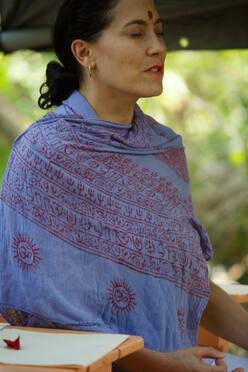 I found an old article "How to Meditate", that I wrote for a women's health club I was teaching for in Albuquerque, New Mexico. This was in the 1990's! I am still meditating daily in 2019 and can't express enough the power and peace as well as inner transformation daily meditation can bring. Words will not express it exactly, so you must try it and experience for yourself the benefits. I have my father to thank, who would tell me to "meditate, meditate, meditate" when I was in high school. I waited a few years later to start (as a freshman in college), because as teens we don't always listen to our parents. Once I started, I see why he have such simple yet powerful advice. My daily practiced deepened during a month living at the Sivananda Yoga Ashram in Canada, during my first yoga teacher training in 1995. The Sivanadna ashrams worldwide have 6am and 8pm daily 30 minute meditations every day. I can offer the same directions now, in 2019, as I wrote in the 1996 article "How to Meditate". Some simple steps to meditation are below. There are many ways to meditate. This is just one. Try it! After 2-3 weeks of daily practice, even just 5-10 minutes a day, reflect on how this has changed your life, or perhaps just your ability to manage stress and feel more peace. Here are some basic steps to meditation:
Meditation brings inner peace, mental calm, clarity and even creativity. A daily routine to meditate is best. But any amount will help. Om shanti, Om peace. By Stacie Dooreck, author of SunLight Chair Yoga: yoga for everyone! and Yoga for everyone books and online teacher trainings/courses, Stress Management Specialist for the Ornish Heart Disease Reversal Program in N. CA and Bay Area, CA "office yoga" instructor. www.sunlightyoga.com Photo below: Sunrise at the Ganges River, Rishikesh India at Divine Life Society Ashram, on Swami Sivananda's porch. 2016 Meditation is an effective and simple tool for stress reduction, calming the mind, gaining clarity, increasing intuition, and concentration.
However, it only works when you do it! Thinking of meditation, intending to practice, and learning it’s philosophy is helpful. But that alone will not give you the fruits of the practice. Try it now with these 10 simple steps: 1. Find a quiet place. 2. Sit in a comfortable position, with spine tall but not tense. If a chair is more comfortable, you can sit tall with feet on the floor. Support the low back with a pillow if needed. 3. Close your eyes. 4. Bring yourself into the present moment. Become aware of your body and surroundings. 5. Take a few deep breaths and then sigh them out. 6. Inhale through the nose. Exhale through the mouth or nose. Start to regulate the breath. Begin slow, rhythmic, deep breathing. 7. Start to observe the breath. 8. Allow the mind to wander at first. It may jump around, but will eventually become quiet. 9. Focus on a point between the eyebrows or the heart area where the mind can rest. 10. When the mind drifts, bring it back to the moment and become aware of the breath. Start with one minute a day and increase as time goes on. Practice, practice, practice. There will be days where you don’t want to meditate. I find that keeping a consistent practice, even if you meditate for only five minutes, will keep the momentum going. Try not to miss more than one day a week. Be patient with yourself—the practice takes time to develop. If you meditate daily, you will be able to face life with more peace and inner strength. The benefits are worth it. Article by Stacie Dooreck, author of SunLight Chair YOga and Yoga for everyone books and online courses. Photo taken at the the Rishikesh, India Divine Life Society Sivananda Yoga Ashram In modern society there is not only a push to do more and achieve more, but a constant bombardment from media to consume more. This is taught by media images and advertisements that try to convince us that the external consumption of material things will give us greater happiness and peace of mind.
However, the truth that the yogis teach is that the way to true inner peace has nothing to do with things on the outside, nor what we accomplish, achieve and obtain — or even from what we do. Instead, the yogis teach us that being in touch with the essence of who we really are, the innermost Self, is the key to inner and lasting peace. This can be realized with a few simple steps a day, practicing some simple yogic tools to connect us with our true nature. It is in this connection with the deepest part of us of that we can experience the simplicity and joy of just “being.” Swami Vishnudevananda, who founded the Sivananda Yoga centers and ashrams in the U.S., said, “It is impossible to find peace outside. If you want to find peace, you have to look for peace where it is. If you want to find peace, you must first of all find it within. If you find this peace within, you will also find it outside. So if you want to have external peace, find, first of all, the peace within.” His guru, Sivananda, said, “To achieve that state of lasting happiness and absolute peace, we must first know how to calm the mind, to concentrate and go beyond the mind. By turning the mind’s concentration inward, upon the self, we can deepen that experience of perfect concentration. This is the state of Meditation.” To sit and do nothing but observe the breath, perhaps a sound (mantra) or other tools to calm the mind, brings so many benefits. It is so simple that many people overlook it and seek external ways to find peace. When we start to meditate, and sit still, for even a few minutes a day, we may see that truly “less is more,” as joy and peace is obtained not in the “doing” but by the “being” of your true nature. To make our lives more simple and create a few more minutes a day to meditate and “be” with our innermost Self, we can follow some basic ideas from the yogic way of living. Yoga, or “union,” is an ancient science to help us reach a greater connection with ourselves and the world around us. Yoga includes postures (asanas), breathing exercises (pranayama), chanting, relaxation, meditation, nonviolent actions and diet (vegetarian) and healthy, balanced eating and living. Even trying small steps from the yogic ideas brings greater health and balance and can impact our life in beneficial ways. Everyone can benefit from yoga, because yoga can be modified to suit your needs. The benefits are numerous, ranging from pain relief to peace of mind. A simple way to think of it is that yoga can be summarized as a full lifestyle. Swami Vishnudevananda condensed the essence of the yoga teachings into five principles for physical and mental health, as well as spiritual growth:
Using these five principals for a holistic yogic lifestyle for inner peace, outer health and harmony with animals and the earth, plus some additional ideas suggested here, can contribute more simplicity, more peace and greater harmony to our day. 10 Ideas to Simplify Our Lives:
Eat a little, drink a little, Talk a little, sleep a little, Mix a little, move a little, Serve a little, rest a little Work a little, relax a little, Study a little, worship a little, Do Asanas (yoga postures) a little, Pranayamas (yogic breathing exercises) a little, Reflect a little, Meditate a little, Do Japa (mantra repetition) a little, do Kirtan (devotional chanting) a little, Write Mantra a little, have Satsanga (gathering of spiritually like minded people) a little. Serve, Love, Give, Purify, Meditate, Realize. Be Good, Do good; Be kind, Be compassionate. Enquire “Who am I?” Know the Self and be Free. --from www.sivanandaonline.org http://www.sunlightyoga.com Stacie Dooreck has been teaching yoga for 20 years, teaches Chair yoga at California assisted living homes, leads the SunLight Chair Yoga Teacher Trainings and wrote the book SunLight Chair Yoga: Yoga for Everyone! Visit www.sunlightchairyoga.com. *This article was also published in the Edge Magazine, 2015. |
AuthorStacie Dooreck is the author SunLight Chair Yoga: yoga for everyone !and Yoga for Everyone! books and ebook. Stacie is a Stress Management Specialist for the Ornish Heart Disease Reversal Program in N. CA and wellness instructor of companies. Stacie is a based in Marin/Bay Area CA and is a certified Sivanadna Yoga instructor since 1995, a Kundalini Yoga and Gentle Integral Yoga Certified instructor. Archives
June 2021
Categories |
- Home
- Chair Yoga Training & Classes
- Yoga for First Responders
- Yoga for Athletes
- Yoga for Companies
- Online Classes
- Articles & Client Reviews
- Contact Stacie
- Journals: shop now!
- Cable TV Episodes
- Live Online Classes
- In the News- Videos
- Healthy Eating (Yogic Diet)
- Blog- Yogatips
- About Stacie
- Books
- Insight Timer LIVE
- Home
- Chair Yoga Training & Classes
- Yoga for First Responders
- Yoga for Athletes
- Yoga for Companies
- Online Classes
- Articles & Client Reviews
- Contact Stacie
- Journals: shop now!
- Cable TV Episodes
- Live Online Classes
- In the News- Videos
- Healthy Eating (Yogic Diet)
- Blog- Yogatips
- About Stacie
- Books
- Insight Timer LIVE
Search by typing & pressing enter

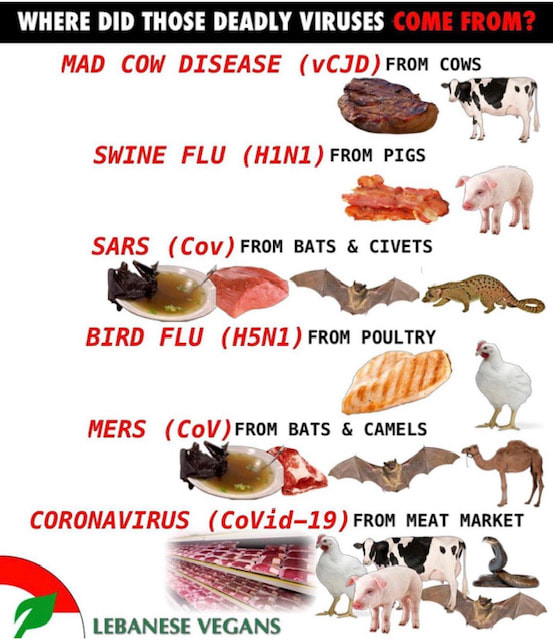
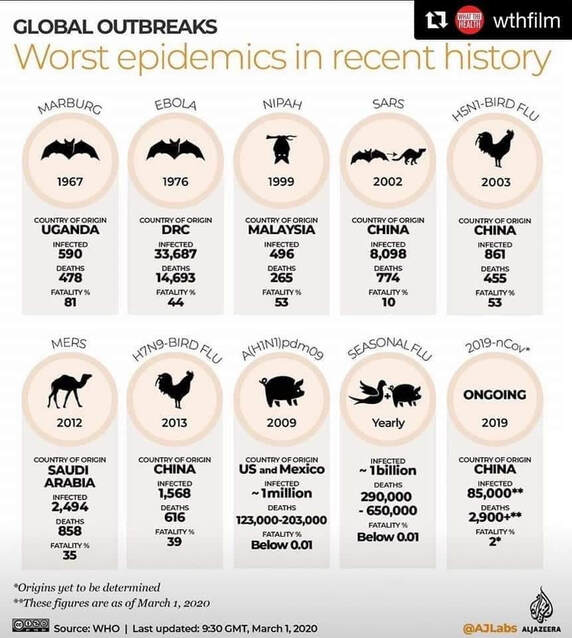

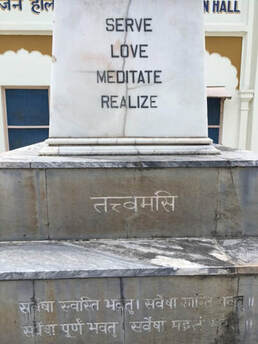

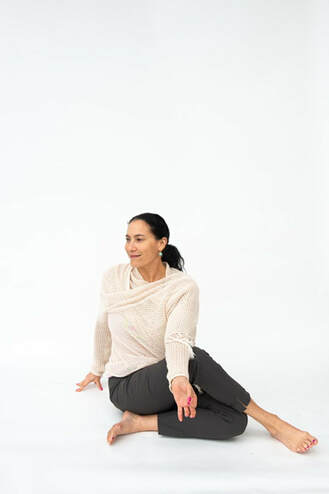
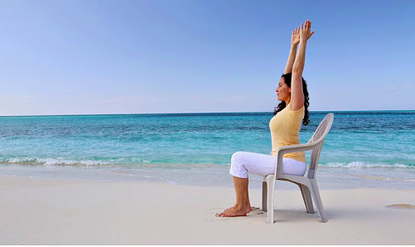

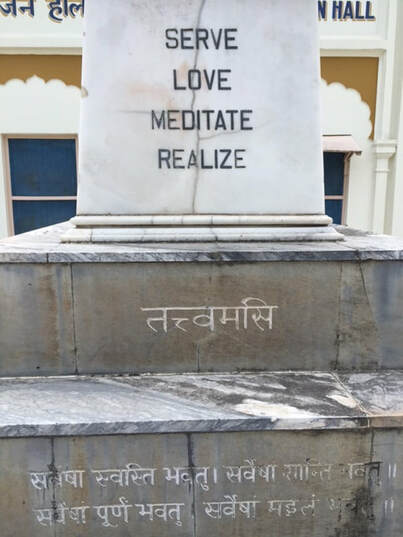
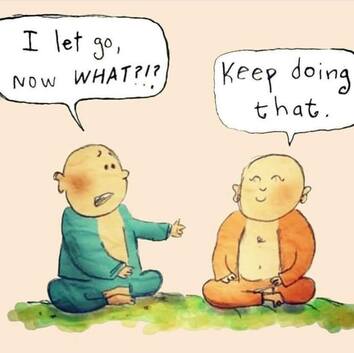
 RSS Feed
RSS Feed
